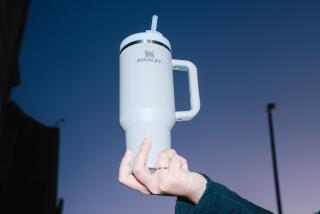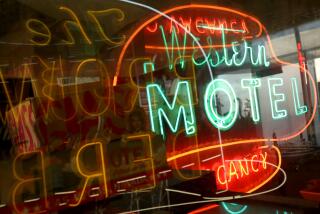TV REVIEW : ‘Design Classics’ Segment Is the Real Thing
- Share via
Little did John Pemberton know, but when he landed upon the soda formula that was to be called Coca-Cola, he would launch a corporate/cultural juggernaut. In an extraordinarily lucid, brief and dramatic television study of how American capitalism functions, tonight’s edition of “Design Classics” looks at the history and development of the Coke product (KCET Channel 28, 8:30 p.m.).
One of the deepest meanings is that the product’s content is actually secondary to the projected product image. As any visitor to remote Third World villages can attest, the festooned Coca-Cola logo has long been the most ubiquitous symbol of the American empire. It is to the credit of this British-made film, supported by crackling, droll commentary by Jancis Robinson, that the considerable political implications of the global Coke phenomenon are not only not overlooked, but are its central thesis.
At the heart of it all is the bottle, the design of which (by Alex Samuelson) was inspired by the ribbed coca nut--Coke was dubbed “dope” by its devotees until the reported ingredient of cocaine was removed from the drink in 1903.
The film details example after fascinating example of how powerful Coke’s cultural influence became, such as how the Santa Claus in Coke’s Norman Rockwell ads fixed in the public mind that he was dressed in red and white--the corporate colors.
Coke’s political influence was no less great. It is revealed that after World War II, the U.S. government funded the building of foreign-based Coke factories. The flashing Coke sign, the glinting bottle, became the symbol of postwar American optimism and power.
Virtually no detail gets past the film’s intelligent, tongue-in-cheek attitude. You’ll never look at a Coke bottle the same way again.
More to Read
The complete guide to home viewing
Get Screen Gab for everything about the TV shows and streaming movies everyone’s talking about.
You may occasionally receive promotional content from the Los Angeles Times.





